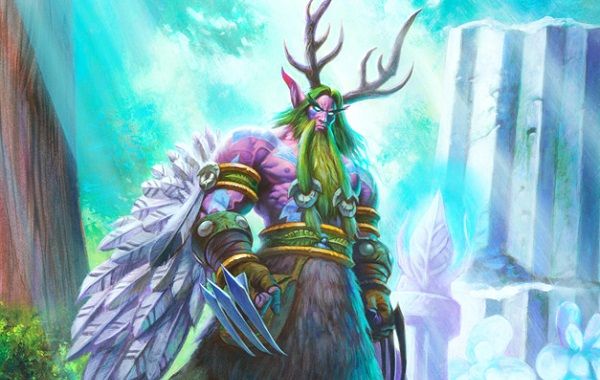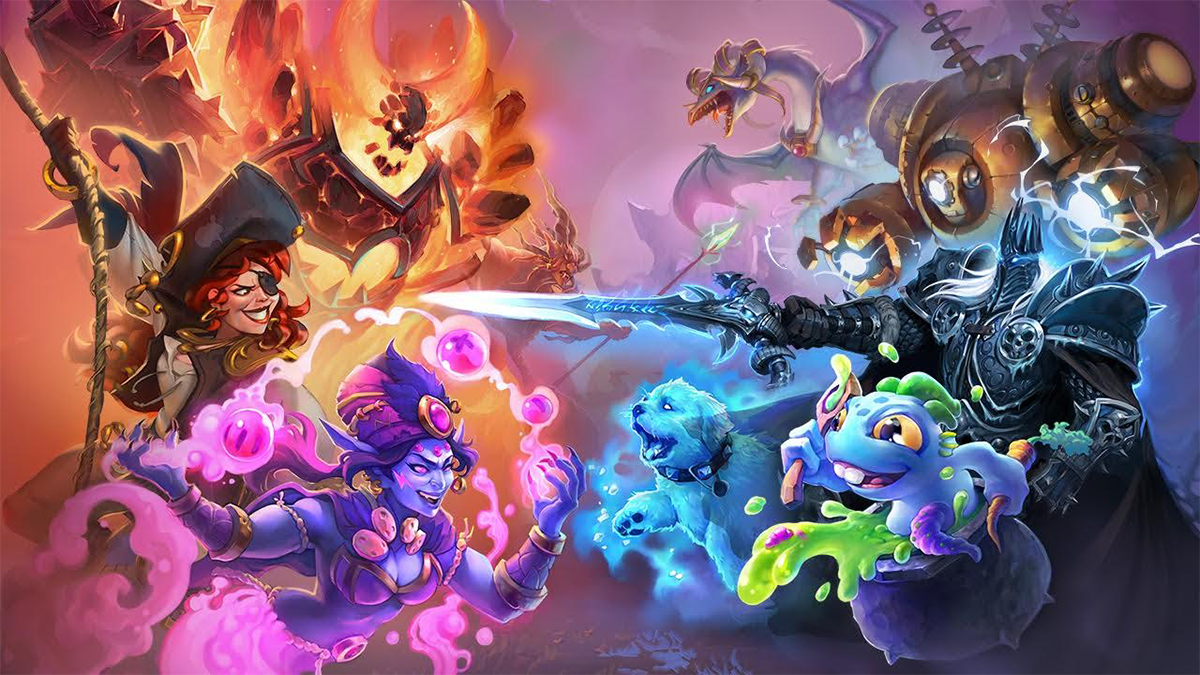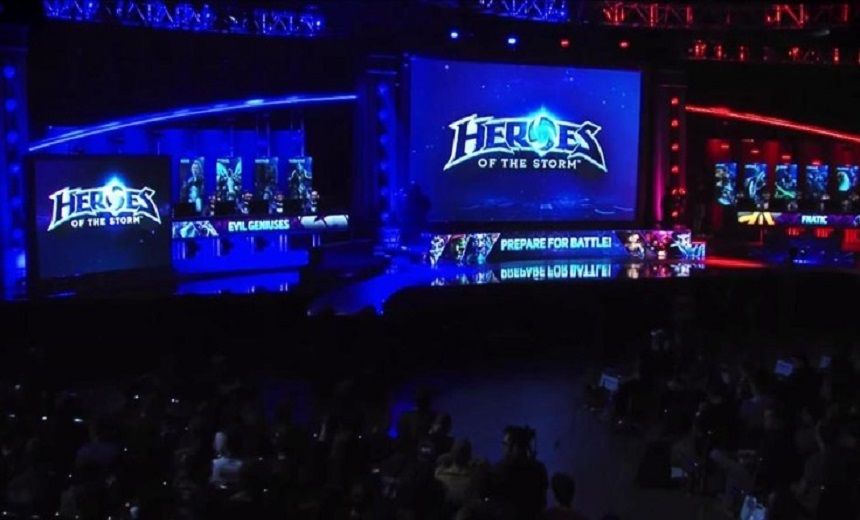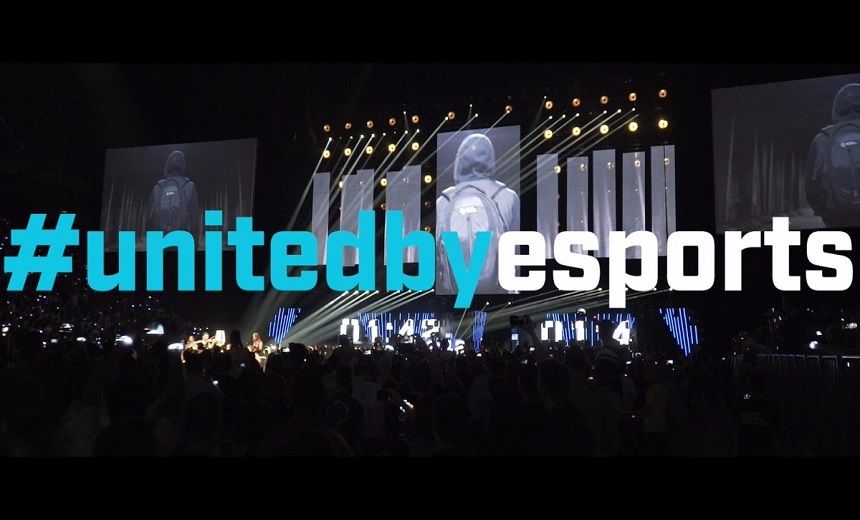Written by: @spc_monkey and @ggnydra
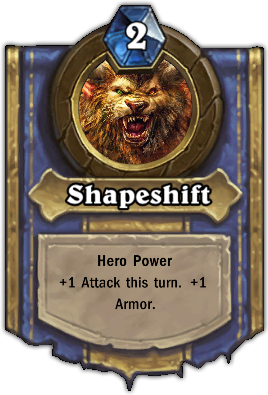
Druid is one of the classes blessed by the developers with flexible hero power. His Shapeshift is good both on the offense and on the defense and the possibility to stack armor, clear the opponents’ early-game minions or to finish his big threats is great. Together with the other two hero powers allowing that deal damage to minions – Mage's Flameblast and Rogue's Dagger Mastery, his power is definitely in the top.
This flexibility goes beyond Druid’s hero power and is present in the class cards as well. Many of his class spells and minions allow you to choose between two options, thus allowing for optimal choices when cast, which makes the Druid a class that can either dictate and respond to the state of the game. Minions like Ancient of War and Druid of the Claw can be played in defensive and offensive modes depending on what’s needed while others like Ancient of Lore and Keeper of the Grove come in with different kinds of built-in utility. The same goes for Druid’s spells, regardless of if they’re direct damage sources (Wrath, Starfall) or minion buffs (Mark of the Wild/Mark of Nature).
Similar to the Paladins’, the Druids' collection of class spells encompass almost every effect in Hearthstone. In addition to the aforementioned 2-in-1 minions and spells, Druids cards are able to restore life (Healing Touch), act as hard removals (Naturalize), draw cards (Ancient of Lore, Nourish), silence enemies (Keeper of the Grove) and spawn tokens (Force of Nature, Soul of the Forest). The Druids also possess the unique ability to ramp their mana and gain additional crystals through Innervate and Wild Growth (although it has a ramping effect built in, Nourish is almost always used for card draw).
The Druids fit well in both the mid-range playstyle and the heavy control set-ups. Popularized by StrifeCro and examined in detail in the last section of this article, the former type of Druids rely on incrementally establishing board control through removal spells and buffing effects (Wrath, Swipe, Wild Pyromancer, Keeper of the Grove and Defender of Argus are key cards for the early and mid game) in order dominate the game.
The latter type also follows the same “control the board” idea for the early-to-mid stages but relies more heavily on big bodies and end-of-curve legendaries like Ancient of War, Ragnaros and/or Ysera to finish the game. Those are often duplicated by Faceless Manipulators and protected by Sunwalkers for maximum efficiency.
As both those archetypes can be very expensive, players with poorer collections often turn to a third type of deck – the Druid aggro. Displayed in the budget section below, the aggro deck relies on token generators that can be buffed through Mark of the Wild, Mark of Nature and Power of the Wild to deal quick and heavy beating.
Druids’ versatility also makes them one of the best decks in the current meta. Able to survive the early game pressure from Warlocks, heal away the direct damage of Mages and have all the right cards for late-game scenarios, a well-built Druid deck will always have good win rates if played correctly.
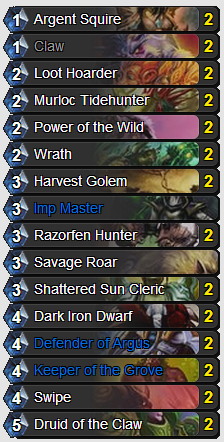 For your first steps playing as a Druid it’s better to focus on a more aggressive approach as the heavy control decks require a lot of epic and legendary cards to be efficient. The aggro builds, on the other hand, use many of the good basic and common in minions which are cheap to craft and usable in other decks as well. Add the Druid removal and buffing spells and you get a normal midrange deck. Look up our crafting guides if you’re confused how to best spend your dust.
For your first steps playing as a Druid it’s better to focus on a more aggressive approach as the heavy control decks require a lot of epic and legendary cards to be efficient. The aggro builds, on the other hand, use many of the good basic and common in minions which are cheap to craft and usable in other decks as well. Add the Druid removal and buffing spells and you get a normal midrange deck. Look up our crafting guides if you’re confused how to best spend your dust.
One popular budget deck that we encountered on the lower ladder ranks is the token-based Druids. In case you’re not familiar with the term, “tokens” in other CCGs refer to creatures that are not cards by themselves but are rather spawned through other creatures or spells. In Hearthstone, examples of cards that create tokens are Imp Master, Razorfen Hunter, Silver Hand Knight, Hogger etc.
The deck on the right will require some crafting on your part but know that your dust will be well spent: apart from Imp Master (which somewhat situational card), every other minion or spell that you craft will be used in whatever Druid deck you decide to play in the future. Playstyle-wise, your goal is to populate the board through token generators, buff them up and look for good trades. In some cases, AoE buffers like Power of the Wild and Savage Roar will allow you to finish the opponent in one swing if you have enough minions on the board.
Building a Druid deck that be competitive in the high ranks of the ladder is an expensive task. Most of the high-ranked Druids have only a couple of free cards (Innervate, Claw, Swipe and Novice Engineer) and invest a lot in legendaries, rares and epic cards to become the hard-hitting builds they are.
The paragraphs below will guide you through the essential crafts for Druid (both general and class-specific) as well as examine the situational cards so you can more wisely spend your dust.
I. The essentials
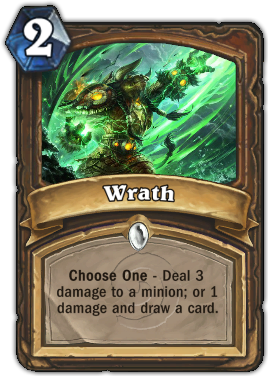 Wrath is the versatile single-target removal of the Druid. The 3-damage option will kill most early game minions while the other choice will draw you a card immediately while finishing 1-health minions. In emergency situations, you can cantrip it away, i.e. deal 1 damage anywhere and hope to draw the card you need.
Wrath is the versatile single-target removal of the Druid. The 3-damage option will kill most early game minions while the other choice will draw you a card immediately while finishing 1-health minions. In emergency situations, you can cantrip it away, i.e. deal 1 damage anywhere and hope to draw the card you need.
Wrath is a must craft regardless of what type of deck you’re playing as it’ll deal with most of the problems you’ll encounter. It snipes Harvest Golems, Void Walkers, SI:7 Agents and X/2’s that are buffed up through Blood Imp/Young Priestess (Flame Imps, Knife Jugglers, Shattered Sun Clerics). It allows for favorable trades when dealing with Defias Ringleader’s token, Argent Squires, Leper Gnomes, Paladin’s Recruits and large portion of the Murlocs. Don’t hesitate and just craft it.
Druid of the Claw is a one-of-two minion that is good for both offense and 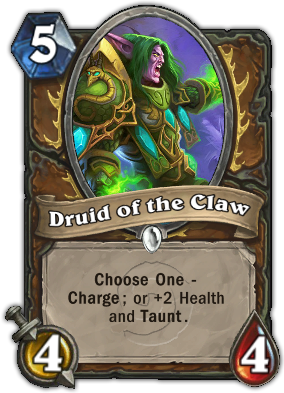 defense. The 4/4 charge option works like a poor man’s Argent Commander which can jump on the board to kill a creature immediately or deal the blow that finishes the opponent. The 4/6 taunt form, on the other hand, is great when you’re in need of solid defense. 6 toughness are hard to get through (there are exactly two minions for five mana or less that can trade with Druid of the Claw one-for-one) and if left unanswered with a removal, the Druid will often trade two for one. Next to Wrath, this is the other Druid common card that you need to craft immediately.
defense. The 4/4 charge option works like a poor man’s Argent Commander which can jump on the board to kill a creature immediately or deal the blow that finishes the opponent. The 4/6 taunt form, on the other hand, is great when you’re in need of solid defense. 6 toughness are hard to get through (there are exactly two minions for five mana or less that can trade with Druid of the Claw one-for-one) and if left unanswered with a removal, the Druid will often trade two for one. Next to Wrath, this is the other Druid common card that you need to craft immediately.
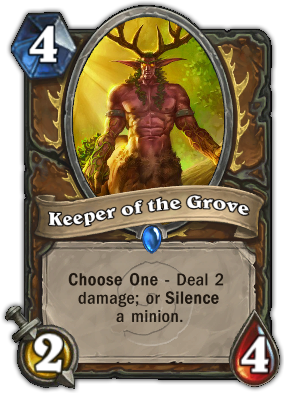 Keeper of the Grove is a great 2/4 for 4 minion with two excellent modes to choose from. The silence will deny the deathrattles of Sylvanas, Harvest Golem or Cairne, remove taunts, buffs, divine shields and Ysera’s end-of-turn trigger and will make Tirion a useless 6/6 for 8.
Keeper of the Grove is a great 2/4 for 4 minion with two excellent modes to choose from. The silence will deny the deathrattles of Sylvanas, Harvest Golem or Cairne, remove taunts, buffs, divine shields and Ysera’s end-of-turn trigger and will make Tirion a useless 6/6 for 8.
The other option lets you do 2 damage on arrival which is also great in every match-up. The Keeper will snipe most of the early game minions and will stay on the board, giving you a two for one trade more often than not. This battlecry can also do damage directly to hero’s face so it’s a good way to deal some damage past taunters or help with beatdowning the opponent.
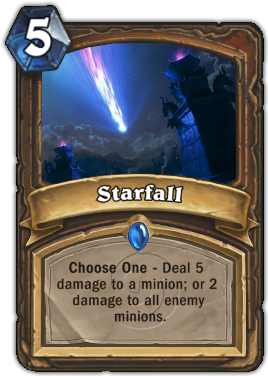 Starfall is another versatile removal. It’s AoE version hits the enemy board for 2 damage which can do nasty things to aggro decks (even more so if there are no Blood Imps in play), especially now that Shattered Sun Cleric and Argent Commander, two of the most widely used minions, are in its range.
Starfall is another versatile removal. It’s AoE version hits the enemy board for 2 damage which can do nasty things to aggro decks (even more so if there are no Blood Imps in play), especially now that Shattered Sun Cleric and Argent Commander, two of the most widely used minions, are in its range.
Even though it’s more expensive than, say, Consecration or Hellfire, Starfall retains its potency due to the synergy with other Druid cards. It can be Innervated on T3 before enemy’s board has grown fat or it can be played after Swipe to finish the surviving minions.
The single target version of Starfall is more rarely used and comes in play mostly in Druid mirrors where it can get Druids of the Claw down to Shapeshift range, clear Ancients of Lore or kill silenced Ancients of War. You will also find it useful against Shaman’s Fire Elementals, Sunwalkers or Sylvanas.
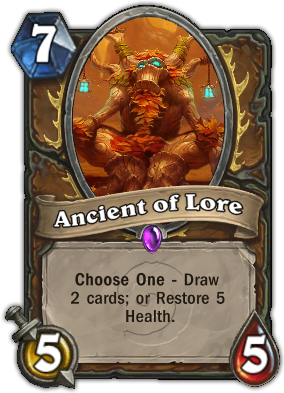
?Ancient of Lore is a minion that’s also found in every deck. In most cases, Ancient of Lore will enter play as a 5/5 body that casts Arcane Intellect which is great value for 7 mana: it gives you board presence and fills your hand at the same time which will often be a game turner.
If that’s not good enough a bargain, Ancient of Lore has the option to restore 5 health on battlecry, making it extremely important against Mages who tend to burn down the Druid quickly.
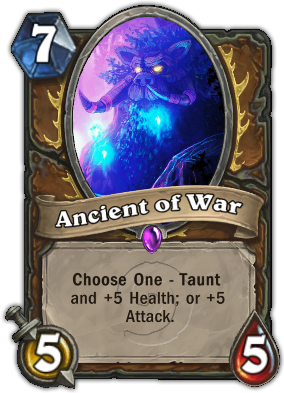 The huge minion that it is, Ancient of War is going to save your life against many aggro decks. The 10/5 version is rarely used as it’s easy to remove but the 5/10 taunt body is something many decks will struggle with (Warlocks in particular run no hard removals and neither do most Mages). In most cases, it will trade at least two for one and sometimes even three or four for one. Even if it becomes victim to hard removal, Ancient of War is still worth it because it’s not too expensive and baits out cards that can otherwise get rid of your Ragnaros, Cairne or Ysera.
The huge minion that it is, Ancient of War is going to save your life against many aggro decks. The 10/5 version is rarely used as it’s easy to remove but the 5/10 taunt body is something many decks will struggle with (Warlocks in particular run no hard removals and neither do most Mages). In most cases, it will trade at least two for one and sometimes even three or four for one. Even if it becomes victim to hard removal, Ancient of War is still worth it because it’s not too expensive and baits out cards that can otherwise get rid of your Ragnaros, Cairne or Ysera.
Despite being a great card, we strongly advice you to craft Ancient of Lore first: some contemporary versions of the Druid (namely StrifeCro's buid that we examine below) have found ways to work just fine without Ancient of War by using Defenders of Argus for protection and if you have 400 dust to spare it's better spent on the Ancient you'll always need.
II. Situational crafts
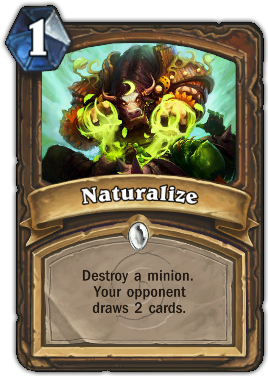 Naturalize is the cheapest unconditional removal in the game. It has big drawback but many times the card your opponents draw won’t matter too much if naturalizing something means killing your enemy or removing that Ragnaros in order to stay alive. This is also the only way the Druid has to remove minions without relying on damage but because if it’s drawback you’ll want to save it for emergencies.
Naturalize is the cheapest unconditional removal in the game. It has big drawback but many times the card your opponents draw won’t matter too much if naturalizing something means killing your enemy or removing that Ragnaros in order to stay alive. This is also the only way the Druid has to remove minions without relying on damage but because if it’s drawback you’ll want to save it for emergencies.
Naturalize is also a good replacement for Tinkmaster Overspark so those with poorer collections might want to include one copy in their decks.
 Nourish is a support card with two modes of which the ramping choice is rarely used: spending your entire turn to ramp up that late in the game is never worth it.
Nourish is a support card with two modes of which the ramping choice is rarely used: spending your entire turn to ramp up that late in the game is never worth it.
The other option, however, will draw three cards which is a way better deal. Nourish shines in the late game when you have enough mana to cast it and follow it up with another card while at the same time keeping a rich hand. It’s even better when you have board control and can afford to spend half or more of your mana.
The reason most high-level Druid decks avoid running Nourish, however, is that it’s often a dead card before late game. Casting it on T5 is risky because it spends all the mana and leaves opponent’s board untouched, for which you’ll be often punished. It’s still cheaper than Ancient of Lore dust-wise, though, so it can be sort of a poor man’s replacement for it.
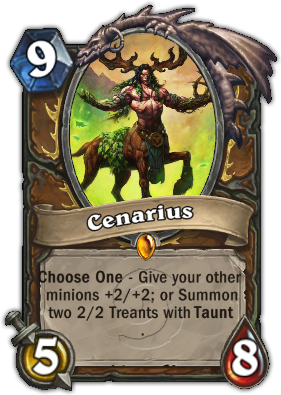 Fitting the entire one theme of the Druids, class’ legendary Cenarius offers such a deal as well. His first battlecry casts Power of the Wild to all your minions, giving them permanent +1/+1, which comes in handy when your side of the board is populated and you want to more quickly finish your opponent or ensure favorable trades in the late game.
Fitting the entire one theme of the Druids, class’ legendary Cenarius offers such a deal as well. His first battlecry casts Power of the Wild to all your minions, giving them permanent +1/+1, which comes in handy when your side of the board is populated and you want to more quickly finish your opponent or ensure favorable trades in the late game.
His second battlecry effect summons two 2/2 taunters. While this doesn’t sound like a big deal on T9, getting two blockers can be life-saving: surviving for one extra turn is precious regardless of what type of deck you’re playing.
Although Cenarius is played in high-tier Druid decks (the aforementioned StrifeCro build for example), we suggest that you’re not too hasty with his crafting. There are other legendaries which are way more important for Druids and acquiring a Cenarius can certainly wait.
III. To the neutral pool!
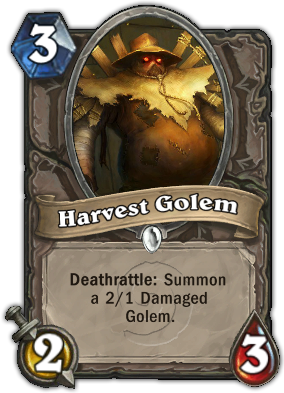 The neutral pool offers a big choice of cards which can fit well into a Druid deck. Loot Hoarder and Harvest Golem are welcome in most of the builds as they're good minions by themselves (Harvest Golem has built in value in it while Loot Hoarder will draw you a card while cleaning up early game minions). Sunwalker is a great replacement if you lack Ancients of War – it’s a 6 mana taunter with divine shield which makes it good against low-cost aggro decks. If the divine shield is not popped with hero abilities like Fireblast, Dagger Mastery or Shapeshift, the Sunwalker will soak in at least two attacks which is fine for that cost.
The neutral pool offers a big choice of cards which can fit well into a Druid deck. Loot Hoarder and Harvest Golem are welcome in most of the builds as they're good minions by themselves (Harvest Golem has built in value in it while Loot Hoarder will draw you a card while cleaning up early game minions). Sunwalker is a great replacement if you lack Ancients of War – it’s a 6 mana taunter with divine shield which makes it good against low-cost aggro decks. If the divine shield is not popped with hero abilities like Fireblast, Dagger Mastery or Shapeshift, the Sunwalker will soak in at least two attacks which is fine for that cost.
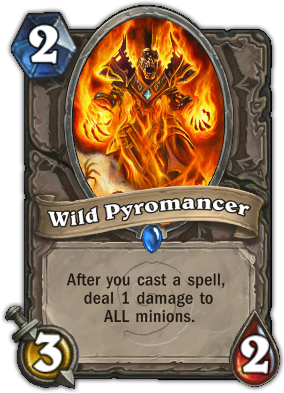 Staying on blue rarity, we ought to mention the Wild Pyromancer, a card that became extremely popular during the boom of the aggro decks. The Pyromancer has a lot of synergies with Druid’s spells and helps the class stay alive in otherwise very difficult match-ups. It might be a “flavor of the month” card (it’s far less useful in control mirrors) but as long as aggro decks are popular every slower build will need a couple of those. You should check out our “Card spotlight” article on the Pyromancer to learn all of his uses.
Staying on blue rarity, we ought to mention the Wild Pyromancer, a card that became extremely popular during the boom of the aggro decks. The Pyromancer has a lot of synergies with Druid’s spells and helps the class stay alive in otherwise very difficult match-ups. It might be a “flavor of the month” card (it’s far less useful in control mirrors) but as long as aggro decks are popular every slower build will need a couple of those. You should check out our “Card spotlight” article on the Pyromancer to learn all of his uses.
Defender of Argus is another card you might want to craft if you plan on running a midrange Druid. He comes in to make for the absence of Ancient of War in those decks and is considered by many to be better choice between the two.
Two epic cards that control Druids run are Faceless Manipulator and Big Game Hunter. Manipulator’s uses are obvious – copying your or enemy’s big threats for just 5 mana is great as Manipulator’s targets will often cost more. This will allow you to get a cheaper version of them which in turn frees up mana to do more stuff in the same turn. The Big Game Hunter became popular when Ragnaros dominated the late-game meta and he was an easy way to clear the threat. He can also snipe the Molten and Mountain Giants which control Warriors and Warlocks like to run so consider Big Game Hunter if those decks give you much trouble. If you have both Faceless Manipulator and BGH in hand, you can, for example, copy their Ragnaros and they snipe it, making for a powerful T7.
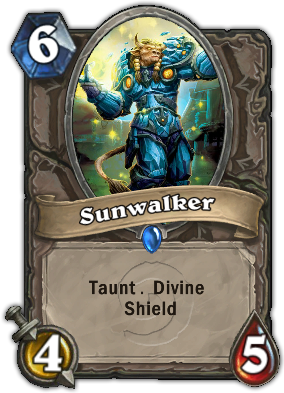
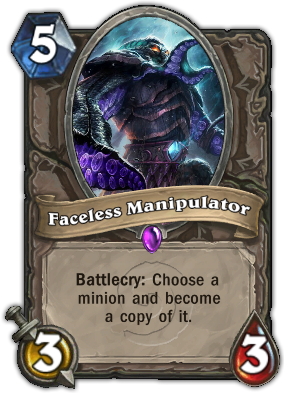
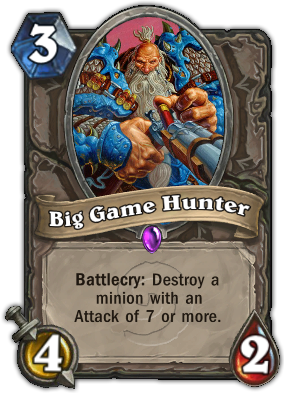
Although not particularly good in the midrange Druid decks, those three widely used in the heavy control set-ups that players like Savjz have been seen to run.
Good Druid decks make use of a lot of legendaries and that’s what makes them extremely expensive. Bloodmage Thalnos is a natural choice for every spell-heavy deck and Druids are no exception. Sylvanas is also a no-brainer and these two should be priority crafts on your way to building an ultimate Druid deck.
Tinkmaster Overspark and The Black Knight are two legendaries whose popularity was dictated by the shift in the meta. Tinkmaster is way to Polymorph away opponent’s big threats and deal with them more easily (even if you get a 5/5 Devilsaur it’s still better than having to face a living and breathing Ragnaros, Sylvanas, 5/10 Ancient of War, Tirion or a fat Edwin van Cleef). The card is also more versatile than the Big Game Hunter because it can deal with threats that are below 7 attack and is rarely a dead card because of that.
The Black Knight, on the other hand, is nothing that special, merely a counter to Defender of Argus, Ancient of War and Earth Elemental. Even if he doesn’t get to destroy a taunter, he can still come in play as an overpriced Chillwind Yeti (playing 4/5 for 6 is better than not playing anything. Just cast it if you know your opponent has run out of taunt cards).

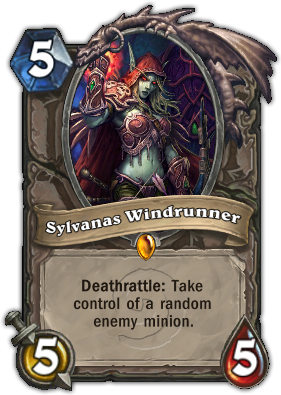
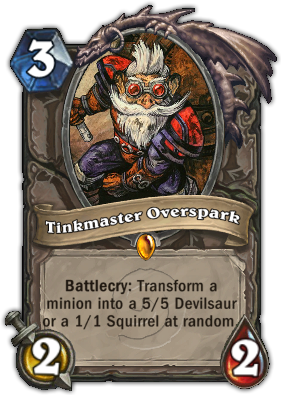
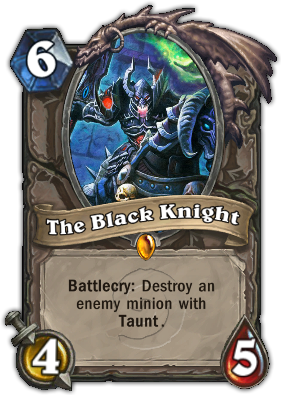
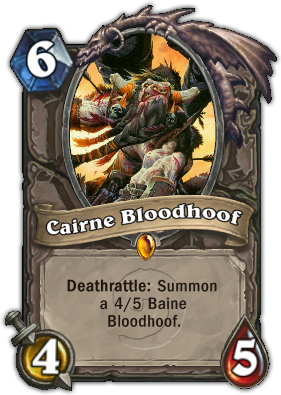 Climbing up the mana curve leads us to more legendary cards that druids love. A popular minion in the current meta is Cairne Bloodhoof, a 4/5 for 6 that spawns another 4/5 on deathrattle, meaning he’s essentially a big and expensive Harvest Golem. Similar to the Golem, Cairne will always
Climbing up the mana curve leads us to more legendary cards that druids love. A popular minion in the current meta is Cairne Bloodhoof, a 4/5 for 6 that spawns another 4/5 on deathrattle, meaning he’s essentially a big and expensive Harvest Golem. Similar to the Golem, Cairne will always
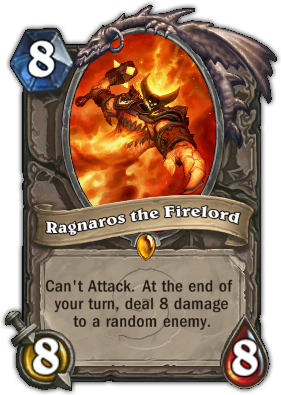
give you two for one trades (unless he’s silenced, of course) and sometimes even three or four for one if you’re fighting a low-cost aggro deck. Pair him with Defender of Argus and watch your opponent go insane, trying to invent an efficient way to go through him.
?Ragnaros is another card that Druids love to play. Not only do Druids have efficient ways to protect this legendary by playing him behind meaty taunters, but they can also Innervate him before T8 which no other class can do. A T6 Ragnaros (1x Innervate) is a scary thing to face and a T4 Ragnaros (2x Innervate) will often decide the game there and then unless immediately killed by hard removal.
There are a few cards that were popular picks for Druids in December but gradually came out of fashion as new, more effective builds were designed. Older control Druids used to run the Ancient Watcher + Sunfury Protector/Defender of Argus to stop early aggression. Although the combo was dropped by high tier decks because of its unreliability and replaced by Wild Pyromancers (an Ancient Watcher without Protector/Defender is useless and taking the risk of having such a card is too big), it can still be seen occasionally.
Ysera used to be ran alongside Ragnaros in heavy control decks but it’s a rare sight nowadays. Although a good card by itself, the dragoness is a bit slow and needs a few turns to pay off, especially if you don’t get Ysera Awakens, Dream or Nightmare right away. She’s can be very scary when innervated early but playing her at T9 is risky – she doesn’t have an immediate impact on the board and consuming all your mana leaves you vulnerable.
Baron Geddon was ran in older versions of StrifeCro’s build. Although it deals damage to allied characters as well, the Baron is an effective way to deal with minion-based decks (not just Warlocks but all midrange decks as well). Newer builds have him replaced with Cairne Bloodhoof but if the Baron is in your collection you should try it out.
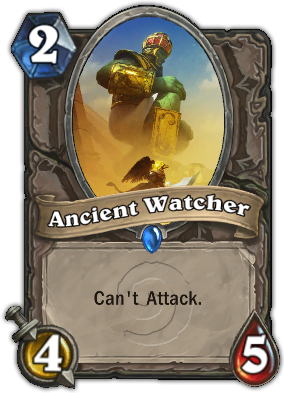
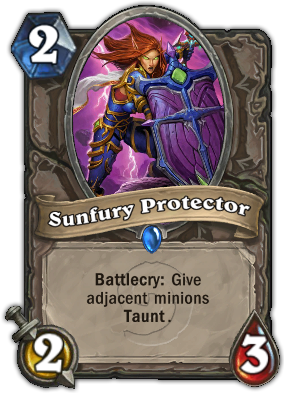
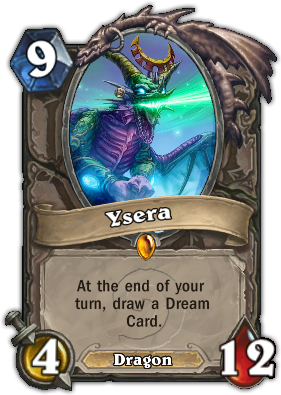
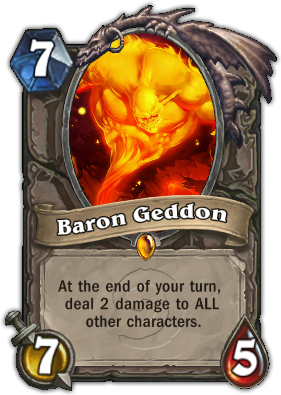
I. StrifeCro's midrange
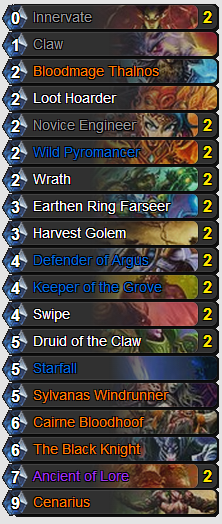
StrifeCro’s Druid build (examined in detail by Gnimsh here) is widely considered to be the best Druid deck at the moment. It’s an extremely flexible build that features elements of midrange and control, allowing him to change playstyles and have the right answers depending on the match-up.
One of the biggest strengths of this deck is its resistance to aggressive decks. Not only does it run two Swipes, two Wraths and a Starfall, it also implements Wild Pyromancers for additional AoE damage, Defender of Argus for spawning taunters and, of course, Bloodmage Thalnos to make the direct damage spells stronger. The deck is well prepared against Mages too, running Double Earthen Ring Farseer and double Ancient of Lore help the Druid stay alive against the endless barrage of burn.
Although its control power is strong, the deck can easily go on the offensive when playing against a slower deck. The mana curve is built in such a way that there’s a value minion to be played on every one of the mid-game turns (there are four 3-mana minions, four 4-mana minions and three 5-mana minions). The Black Knight is there to clear the way while Ancient of Lore keeps the hand full.
Some of the minor adjustments that can be made to the deck include the replacing of Cenarius with Ragnaros or dropping one Earthen Ring Farseer for a Healing Touch. The first is a matter of personal preference (we still like Ragnaros better) while the second is an extra protection against Mages (consider it if Pyroblasts become too big a nuisance). Some versions also drop the Loot Hoarder in favor of Tinkmaster Overspark or Nat Pagle but bear in mind that those are cards that slow down the deck a bit and make it more control oriented.
II. Savjz' control
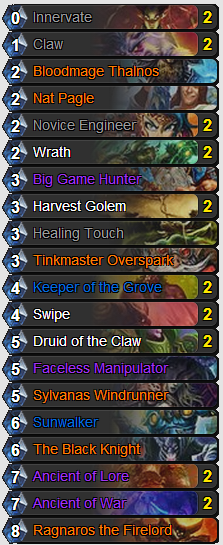 ?Savjz’ build is a classic example of a control deck: it relies on direct damage spells and board sweepers to stay alive so it can play its big threats and then protect them until they can win the game.
?Savjz’ build is a classic example of a control deck: it relies on direct damage spells and board sweepers to stay alive so it can play its big threats and then protect them until they can win the game.
A large part of this deck mimics StrifeCro’s build: the Swipes, Wraths, Claws and Starfalls are all here, as are the ubiquitous Harvest Golem, Keeper of the Grove, Druid of the Claw and Ancient of Lore. Everything else, however, is in there to make for a powerful late game. There are two Ancients of War and a single Sunwalker to protect the Druid and its finishers from harm. There’s a Faceless Manipulator to copy said finishers or those of the opponent. Big Game Hunter and Tinkmater Overspark are put in as anti-Ragnaros/anything else measures, respectively.
As every pure control, this one, too, has difficulties staying alive through the early and mid game. The build has big troubles when matched against Warlock unless he gets out an early taunter or lands a perfect Swipe/Starfall. Rogues and Shamans can also can be a big nuisance as they both have ways to deal with the smaller Druid minions (mostly through direct damage spells and minions) and defuse the expensive threats cost efficiently (Assassinate and Hex are both cheaper than Ancient of War or Ragnaros).
Some modifications can be made to make this build more versatile. We experimented with dropping 1x Nat Pagle and 1x Big Game Hunter in favor of 2x Wild Pyromancer. This allowed us to be more efficient against aggro decks while at the same time retaining the heavy control playstyle. If you want to go full ramp, you can experiment with replacing the Novice Engineers with Wild Growth but we found out that in most of the cases the Novices pay off better – a card and some board presence felt more valuable than ramping up one mana.
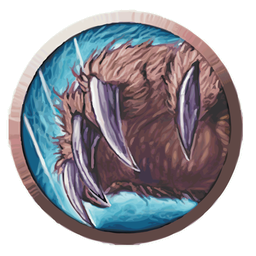 Druid - Crafting + StrifeCro's midrange + Savjz' control
Druid - Crafting + StrifeCro's midrange + Savjz' control
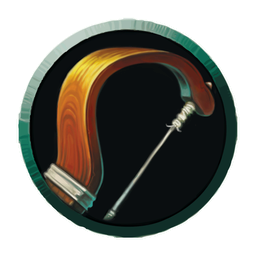 Hunter - Crafting + Unleash the Hounds combo + Beast beat-down
Hunter - Crafting + Unleash the Hounds combo + Beast beat-down
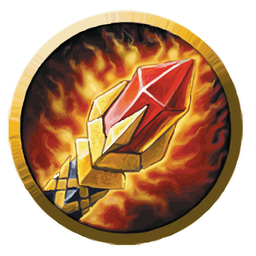 Mage - Crafting + Aggro Mage + Ice Block control
Mage - Crafting + Aggro Mage + Ice Block control
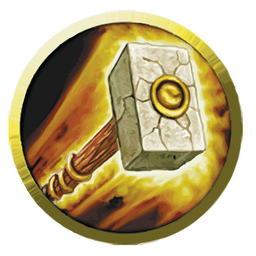 Paladin - Crafting + Miniatures + Mid-range/Control
Paladin - Crafting + Miniatures + Mid-range/Control
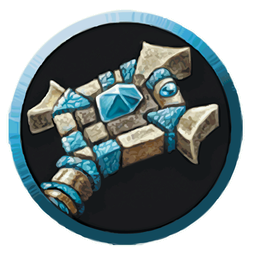 Priest -
Priest -
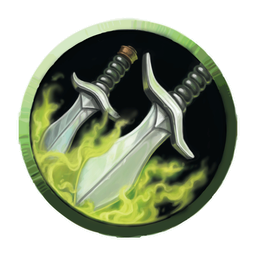 Rogue -
Rogue -
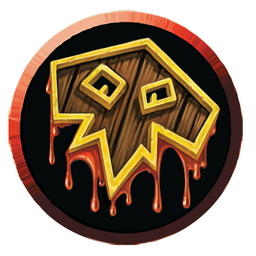 Shaman - Crafting and building the mid-range control
Shaman - Crafting and building the mid-range control
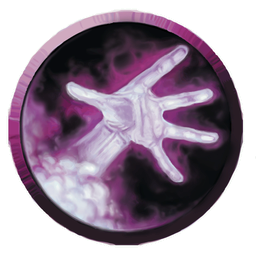 Warlock - Crafting + Aggro Warlock + Murlocs + Board control Warlock
Warlock - Crafting + Aggro Warlock + Murlocs + Board control Warlock
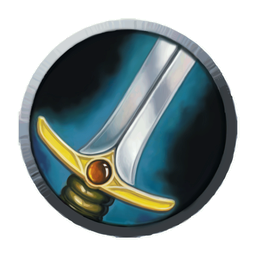 Warrior -
Warrior -

